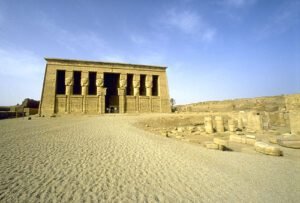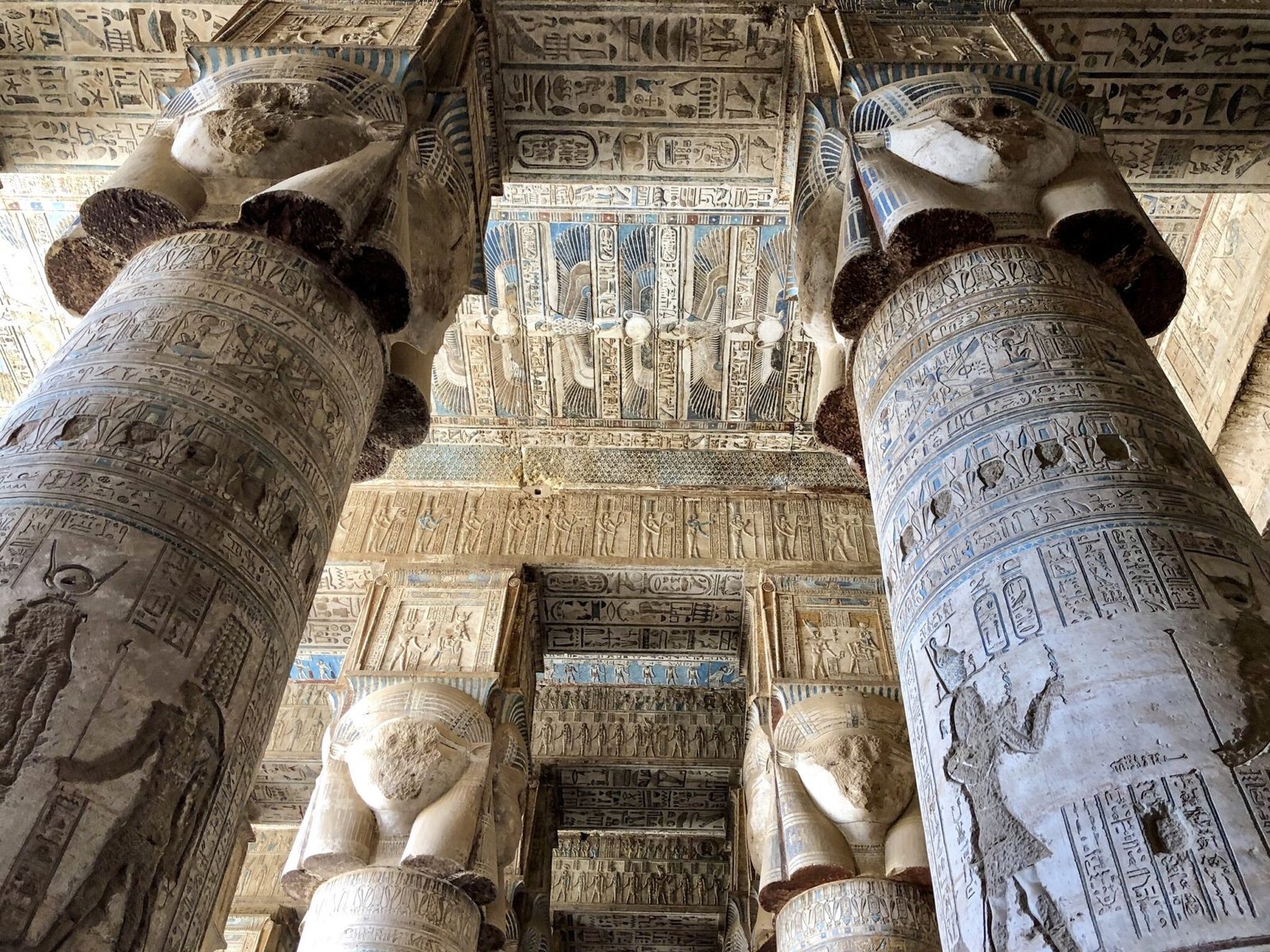The Temple of Hathor Dendera
Exploring the Temple of Hathor: A Gem in Ancient Egypt
The Temple of Hathor, located in the Dendera Temple Complex in Upper Egypt, is one of the best-preserved and most stunning temples of ancient Egypt.
Rich in historical significance, architecture, and cultural importance, the Temple of Hathor offers a fascinating glimpse into Egypt’s illustrious past.
Introduction to the Temple of Hathor
Overview
- Location: Dendera, near Qena in Upper Egypt, approximately 60 kilometers north of Luxor.
- Dedicated To: Hathor, the ancient Egyptian goddess of motherhood, music, beauty, and love.
- Construction Period: The temple complex was built primarily during the Ptolemaic period (305–30 BC) and completed by Roman emperors.
Historical Context
The Temple of Hathor was a central place of worship for one of ancient Egypt’s most beloved deities. Hathor, often depicted as a cow or a woman with cow horns and a sun disk, was considered a divine mother and a symbol of joy and music.
Architectural Marvel
The Main Temple
The Temple of Hathor is the centerpiece of the Dendera complex. Its elaborate architecture is a testament to the skill and vision of ancient Egyptian builders.
Hypostyle Hall
- Columns: The hypostyle hall, also known as the Hall of Columns, features 24 massive columns decorated with detailed carvings and topped with Hathor-headed capitals.
- Ceiling: The ceiling is adorned with astronomical scenes, depicting the zodiac and various deities, illustrating the ancient Egyptians’ fascination with astronomy.
Sanctuary
- Holy of Holies: The innermost part of the temple, where the sacred statue of Hathor resided.
- Sacred Relic: Visitors can observe the beautifully decorated walls within the sanctuary, which served as the focal point for rituals and offerings.
The Rooftop
One of the unique features of the Temple of Hathor is its accessible rooftop, which offers breathtaking views of the surrounding landscape. The rooftop was used for rituals and ceremonies, including the “Feast of the Beautiful Reunion,” symbolizing Hathor’s visit to her husband Horus.
Crypts
Beneath the temple, intricate crypts and passageways store sacred relics and treasures. These subterranean rooms are richly decorated with carvings and texts, further enhancing the temple’s historical significance.
Artistic and Cultural Significance of Temple of Hathor
Wall Carvings of Temple of Hathor
The walls of the Temple of Hathor are covered in elaborate reliefs, illustrating scenes of gods, goddesses, and pharaohs. These carvings provide valuable insights into the religious beliefs and practices of the ancient Egyptians.
The Zodiac of Dendera
One of the most famous artifacts from the Temple of Hathor is the Dendera Zodiac, now housed in the Louvre Museum in Paris. This circular bas-relief depicts the ancient Egyptian representation of the zodiac and various celestial bodies, showcasing their advanced understanding of astronomy.
The “Dendera Light”
A fascinating relief in the temple’s crypts depicts what some believe to be an ancient lightbulb, adding to the temple’s allure and mystery. While this interpretation is controversial, it underscores the temple’s rich and varied iconography.
Visiting the Temple of Hathor
Getting There
- By Car: The temple is approximately a one-hour drive from Luxor. Hiring a private car or joining a guided tour are convenient options.
- By Train: You can take a train from Luxor to Qena, followed by a short taxi ride to the Dendera complex.
Best Time to Visit the Temple of Hathor
The best time to visit the Temple of Hathor is during the cooler months between October and April. Early mornings or late afternoons are ideal for avoiding the midday heat and crowds.
Entrance Fees and Opening Hours of Temple of Hathor
- Entrance Fees: Generally around $10 for adults, with discounts available for students and children.
- Opening Hours: The temple is typically open from 8 AM to 5 PM daily, but it’s advisable to check ahead of your visit for any changes in operating hours.
Practical Tips
- Wear Comfortable Shoes: The temple complex is large, so comfortable footwear is essential for exploring.
- Stay Hydrated: Bring water, especially if you’re visiting during the hotter months.
- Respect the Artifacts: Refrain from touching the carvings and artifacts to help preserve them for future generations.
Modern-Day Relevance
The Temple of Hathor continues to captivate tourists, historians, and archaeologists. Its exceptional state of preservation allows for an immersive experience, transporting visitors back to ancient times.
Cultural Impact
The temple’s intricate design, celestial art, and historical significance make it a key subject of study in Egyptology. It also plays a crucial role in Egypt’s tourism industry, attracting thousands of visitors each year.
Educational Importance
The temple offers valuable educational opportunities. Schools and universities often include it in their curriculum, exploring its architectural innovations, religious significance, and the advanced knowledge of astronomy depicted in its art.
Finally
The Temple of Hathor in Dendera is a remarkable testament to ancient Egyptian ingenuity, artistry, and religious devotion. From its awe-inspiring architecture and celestial-themed decorations to its historical and cultural significance, this temple provides an unforgettable glimpse into one of history’s most fascinating civilizations. Whether you’re planning a trip to Egypt or simply interested in learning more about ancient cultures, the Temple of Hathor offers a wealth of knowledge and an experience that will leave you in awe. With its rich history, stunning architecture, and continuous relevance, the Temple of Hathor remains a true gem in the tapestry of ancient Egypt.







